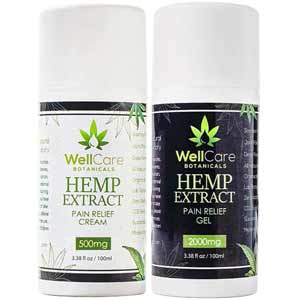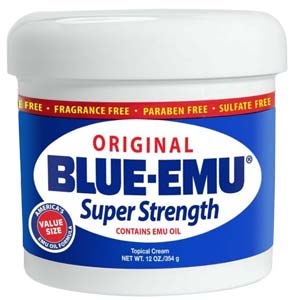What is Tiger Balm?
Tiger Balm is a natural pain reliever that has been used topically for a long time now. The product is made from various herbal ingredients which are mainly found in Asia.

Tiger Balm
Natural painkiller Tiger Balm has been applied topically for a very long time. The product is made of a variety of botanical substances, the majority of which are indigenous to Asia.
Buy on AmazonBuy on Walmart*All the prices mentioned on their websites are subject to change.
In fact, this joint relief product was only available in Asia for the better chunk of its life history. It was only available to the rest of the world through international trade.
The producers claim that the herbal ingredients used in the product are a well-kept secret that dates back to the 18th century.
All the same, the producers claim that they have used modern technology to enhance the working formula of the product.
According to the manufacturer, Tiger Balm is primarily used for:
- Joint pain associated with arthritis
- Relieving muscle stiffness
- Acute headaches
- Discomfort from mosquito bites
- Sinus Congestion
Specs
- Product Name:Tiger Balm
- Form:Ointment
- Price:$5.88
- Ingredients:Camphor, Cajuput oil etc.
- Brand:Tiger Balm
- Unitcount:18gm
What is the Company Behind Tiger Balm?
Tiger Balm is touted as the world’s leading topical analgesic that is directly applied to the point where the pain is being felt.
According to the producers, it is a brand that has been trusted for over 100 years.
They claim that its unique formulation is made using herbal ingredients that have been time-tested and proven safe and efficient.
Despite being an ancient remedy for pain, it is touted to have the power to address the modern-day hectic life.
It is marketed as a topical cream that is good for both young and old. Check out another topical cream for joint pain.
The product has evolved to cater to different needs with plasters, oils, creams, gels, and sprays.
The company behind this product is Haw Par healthcare which is located in Singapore.
However, there is some confusion regarding the actual owners of the brand, since they are several other products with the same name.
How Does Tiger Balm Work?
Tiger Balm is a product designed to offer instant relief to pain. It is applied topically on the affected region.
Tiger Balm has ingredients that are readily absorbed into the body. Primarily, Tiger Balm works by intercepting pain signals before they reach the brain giving you instant relief.
Tiger Balm attempts to address the root cause of the pain by reducing inflammation and swelling.
It is well-equipped to handle both inflammation and swelling. It is ideal for sportsmen and women and people who suffer from acute pain in the joints.
Tiger Balm Ingredients – Are They Safe & Effective?

The producers insist that the ingredients used to make this product are a secret, but we have established them to be;
Camphor
– Camphor is known for its warm and soothing sensation that is known to take away the pain when topically applied.
As per recent study, It is also a power anti-inflammation ingredient[1].
Cajuput oil
– Cajuput has been used in ancient medicine to relieve discomfort that is associated with sore muscles, stiffness and bruises.
Clinical Trial says, It is also believed to have anti-septic properties[2].
Clove oil
– Clove oil is a natural disinfectant that has the ability to warm the skin and reduce swelling.
A promising new direction in the treatment of bones and joints is opened by the combined use of clove oil in lipid nanocarriers[3].
Menthol
– Menthol is a local anaesthesia that is common in topical creams used to relieve pain
Read our reviews on another similar product known as Wild Tiger Balm, which also similar ingredients and comes from same brand.
Pros and Cons of Tiger Balm?
Pros of Tiger Balm
- It has been used for years.
- It is made using all-natural ingredients
- It is safe to use for both kids and adults
- It offers instant relief to pain
Cons of Tiger Balm
- There are so many counterfeits in the market today
- It doesn’t offer nutrients to the body
Tiger Balm FAQs
Q.How To Use Tiger Balm?
A.Tiger Balm can be used as much as you find necessary.
- All the same, it is not recommended to use it more than six times a day.
- You will need to wash the affected area with warm water before applying.
- Massage the affected area with Tiger Balm for at least a minute and allow it to dissolve for about 15 minutes before wiping off if needed.
Q.Does Tiger Balm Have Any Side effects?
A.According to the manufacturer, Tiger Balm does not have side effects.
Q.Where To Buy Tiger Balm?
A.You can purchase Tiger Balm from Amazon and Walmart.
Q.How Much Does Tiger Balm Cost?
A.The cost of Tiger Balm is $5.88.
How We Researched & Rated
Here is our score, based on scientific evidence, of how likely Tiger Balm will be effective for its claimed benefits:
- Relieve muscle stiffness*3.7/5
- Provide instant relief*3.6/5
- Handle the inflammation*3.5/5
- Relieve joint discomfort*3.9/5
We used the insights from our research and testing to assign a star rating from one to five (five being the best; one being the worst) to this product.
Tiger Balm – Customer Reviews
- “Before now, I had never heard of Tiger Balm, but my nurse practitioner suggested it for sciatica pain. I used it frequently each day for a week and was happy with the outcomes. I now always have some on hand and have gifted jars to other family members.” ~ Karen
Tiger Balm Review Conclusion
It is an effective pain reliever that is trusted to provide instant relief. It has been used successfully for years. All the same, this product doesn’t promote proper joint health since it is designed to intercept pain signals instead of repairing the damaged joint causing the pain.
For this reason, it cannot be used by someone who wants a holistic approach to joint care.
Bones are connected by joints, which allow us to move with ease. Joint damage can cause pain preventing you from doing the things you once loved. Topical joint relief supplements tend to work more quickly, helping to relieve pain directly in the affected area compared to supplements taken orally. A topical joint pain relief supplement should be evaluated on its: potential to block the transportation of pain signals, potential to act as a counterirritant to reduce soreness, potential to act as a counterirritant to reduce soreness and Quality of Ingredients* backed by clinical research.
Below you’ll find some of the most effective topical joint pain supplements on the market today, in our opinion.

Our Top Joint Pain Relief Products
Bottom Line
JointXL Plus effectively manages joint pain with natural ingredients, providing substantial relief and support for joint health. Continuous usage is essential, and consultation with healthcare professionals is advised.
Read Full ReviewBottom Line
Well Care Botanicals has a wide selection of unique hemp oil-infused products. These products work well to enhance the benefits of better sleep, focus, relaxation, and pain relief.
Read Full ReviewBottom Line
With pain being one of the most discomforting symptoms of arthritis, people diagnosed with many conditions in this family of diseases tend to search for methods to relieve the pain.
Read Full ReviewBottom Line
Pain, inflammation, and muscle stiffness affect millions of people all over the world. Individuals diagnosed with arthritis and similar conditions also experience stiffness, inflammation, and pain in their joints.
Read Full Review





Ann Marie Miller
Laura P.